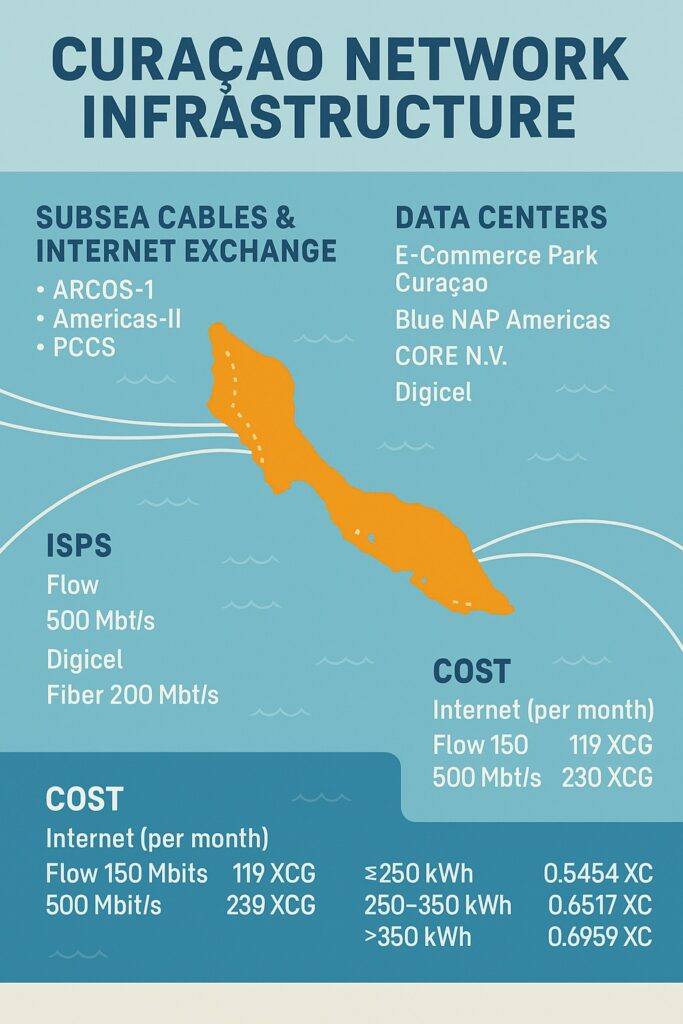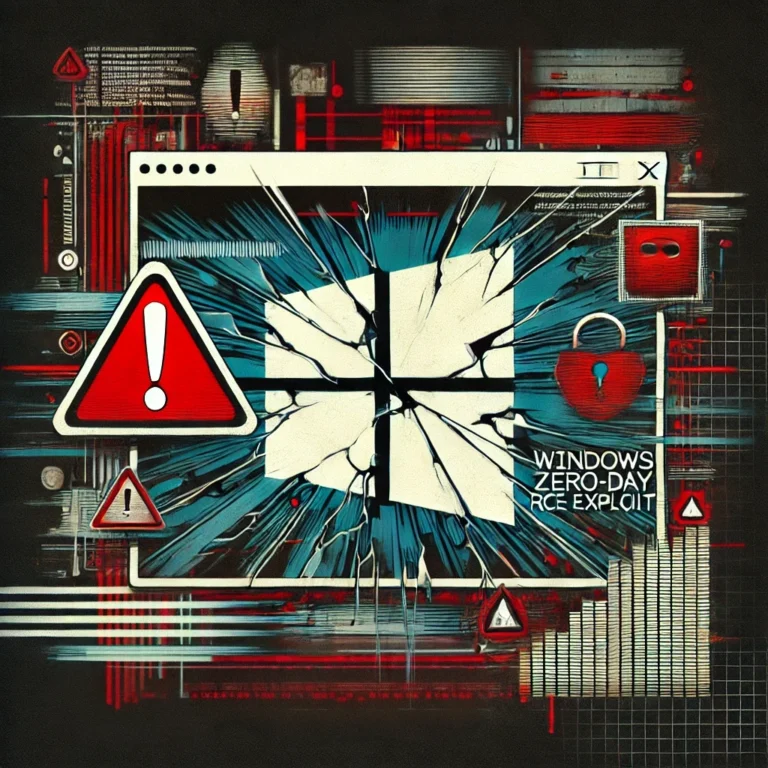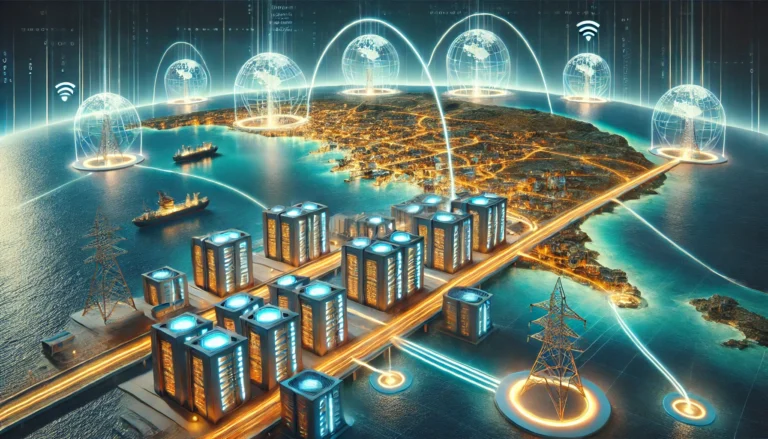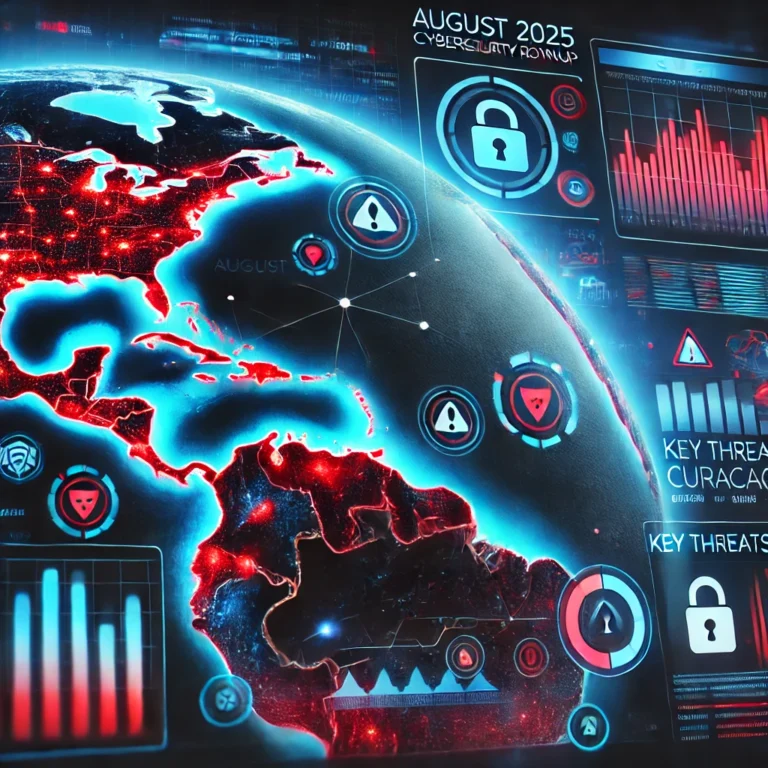Curaçao might be small on the map, but in terms of connectivity, it plays a much bigger role than many expect. With multiple subsea cables, a well-known internet exchange, and several data centers, the island has built a reputation as a reliable digital hub in the Caribbean. Broadband speeds are relatively high, but the price-to-income ratio is still under pressure, and the electricity grid — although improving — continues to test resilience.
In this article we’ll look at the island’s backbone infrastructure, explore the main ISPs, highlight its data centers, review reliability of both internet and power, and finish with a look at what it all costs in 2025.
The Backbone: Subsea Cables and Internet Exchange
Curaçao is plugged into the region through a surprising number of submarine cables. The island has landings for ARCOS-1, Americas-II, and the Pacific Caribbean Cable System (PCCS), with cable stations near Mahuma and Tera Cora. On top of that, there are regional links like Alonso de Ojeda (connecting Aruba) and EC-Link (linking Trinidad & Tobago and Bonaire). This level of diversity means traffic can be rerouted if one system fails, giving the island a solid foundation for resilience.
On land, Curaçao is home to AMS-IX Caribbean, a branch of the Amsterdam Internet Exchange. This local peering point makes a real difference for internet performance. By keeping traffic local — for example when watching YouTube or accessing cloud services — latency is reduced and the user experience improves. Google, Akamai, and Cloudflare all have caches on the island, meaning popular content is served directly from Curaçao instead of bouncing back and forth to Miami or Amsterdam.
The demand for bandwidth keeps climbing. According to the Regulatory Authority of Curaçao (RAC), international internet usage jumped from 87 Gbit/s in 2022 to 114.5 Gbit/s in 2023. For a population of just over 150,000, that is considerable growth and underlines how central connectivity has become.
Internet Providers: Speeds and Affordability
The market for internet access is largely in the hands of two players: Flow and Digicel. Flow runs both fiber and hybrid cable (HFC) networks, while Digicel is focusing on fiber in some neighborhoods and offers LTE-based wireless internet where fiber is not yet available.
In terms of speed, Curaçao does quite well compared to the wider Caribbean. Entry-level broadband typically starts at 150 Mbit/s, while the national average download speed in 2024 was around 87 Mbit/s. That’s more than enough for households streaming video and working remotely. But there’s a catch: affordability. RAC has pointed out that while speeds are solid, the entry-level price is still above the UN’s 2% of income affordability target.
Typical offers:
- Flow Curaçao: Internet 150 (119 XCG/month), Internet 500 (230 XCG/month).
- Digicel Curaçao: Fiber 200 (139 XCG/month) and Wireless Home Internet (25 Mbit/s).
For businesses, both providers advertise broadband up to 600 Mbit/s and dedicated internet with SLAs. Pricing depends on redundancy and route diversity — which is worth checking carefully when reliability is critical.
Data Centers: Local Hosting Options
Despite its size, Curaçao has multiple data centers. RAC lists E-Commerce Park Curaçao, Blue NAP Americas, CORE N.V., and Digicel’s facility as the island’s key players.
- Blue NAP Americas is marketed as a Tier IV facility, with redundant power and cooling and ambitions of becoming a regional cloud and colocation hub. It’s also one of the sites connected to AMS-IX Caribbean.
- E-Commerce Park Curaçao has been around for years and is a well-established, carrier-neutral campus in Willemstad. It offers direct access to multiple carriers and submarine cables.
- CORE N.V. and Digicel’s own DC are newer, but add to the island’s hosting options. Both advertise modern colocation and enterprise services.
When selecting a data center, businesses should look beyond marketing labels. Questions about power resilience (UPS, generators, fuel logistics) and carrier diversity (are routes really independent?) matter more than just a “Tier” certification.
Reliability: Power and Network Stability
Internet stability. The island got a wake-up call in June 2025 when Flow Curaçao suffered a widespread internet outage that lasted more than a day. Cloudflare tracked the disruption, showing traffic plummeting on Flow’s network (AS52233). Around the same period, regulators in the Cayman Islands criticized Flow after a TV outage linked to a data center in Curaçao. Both cases showed how problems in one location can ripple through the region.
Power stability. Curaçao’s electricity grid has had its share of trouble too. In 2023, island-wide blackouts highlighted equipment issues and rising demand. To tackle this, utility company Aqualectra invested in grid stabilization. In 2024 it ordered a 25 MW battery energy storage system from Wärtsilä, and in 2025 expanded that into a performance-based decarbonization agreement. The deal ties payments to reliability and renewable integration, aiming to make the grid cleaner and more stable.
The lesson for both power and internet is clear: no single layer is enough. Households benefit from a UPS and a backup mobile plan. Businesses should think in terms of layered resilience — dual-carrier connectivity, colocating workloads in resilient data centers, and making sure contracts include meaningful SLAs.
The Costs in 2025: Internet and Electricity
Since March 2025 Curaçao uses the Caribbean guilder (XCG), which replaced the Netherlands Antillean guilder at a one-to-one conversion. The currency is pegged to the U.S. dollar at 1 USD = 1.79 XCG.
Residential Internet:
- Flow 150 Mbit/s: 119 XCG/month
- Flow 500 Mbit/s: 230 XCG/month
- Digicel Fiber 200: 139 XCG/month
Business Internet:
Broadband up to 600 Mbit/s and dedicated enterprise services, with prices depending on SLAs and redundancy.
Electricity (Aqualectra, Aug 2025):
- ≤250 kWh: XCG 0.5454/kWh
- 250–350 kWh: XCG 0.6517/kWh
- 350 kWh: XCG 0.6959/kWh
- Commercial: 0.6551 XCG/kWh flat rate.
Compared to many neighbors, Curaçao has high broadband speeds, but affordability remains an issue. Electricity prices fluctuate monthly depending on fuel costs, meaning households and businesses need to budget with some flexibility.

Conclusion
Curaçao’s digital backbone is stronger than its size might suggest. With multiple subsea cables, a local internet exchange, and several data centers, the island is a genuine hub in the southern Caribbean. Internet speeds are high, though affordability remains under pressure. The power grid is undergoing modernization, with large-scale battery storage expected to make outages less frequent.
For households, resilience means combining fixed broadband with a backup mobile plan and a small UPS. For businesses, it’s about choosing data centers with real redundancy, negotiating SLAs, and preparing for occasional power dips.
The outlook is positive. More bandwidth is being used every year, the regulator is pushing for better affordability, and the grid is being stabilized. Curaçao may not be perfect, but for a small island it offers a digital infrastructure that many others in the region would envy.
Sources
- TeleGeography Submarine Cable Map – ARCOS-1, Americas-II, PCCS
- AMS-IX Caribbean
- Packet Clearing House IXP Directory – Caribbean
- Regulatory Authority of Curaçao (RAC) Telecom Indicators 2024 (PDF)
- Flow Curaçao Internet Plans
- Digicel Curaçao Home Internet
- Flow Business Curaçao
- Blue NAP Americas Data Center
- E-Commerce Park Curaçao
- Cloudflare – Internet Disruptions Q2 2025
- OfReg Cayman Islands – Flow TV outage report
- Wärtsilä Press Release – Aqualectra Battery Storage Project
- Aqualectra Electricity Tariffs (Aug 2025)



